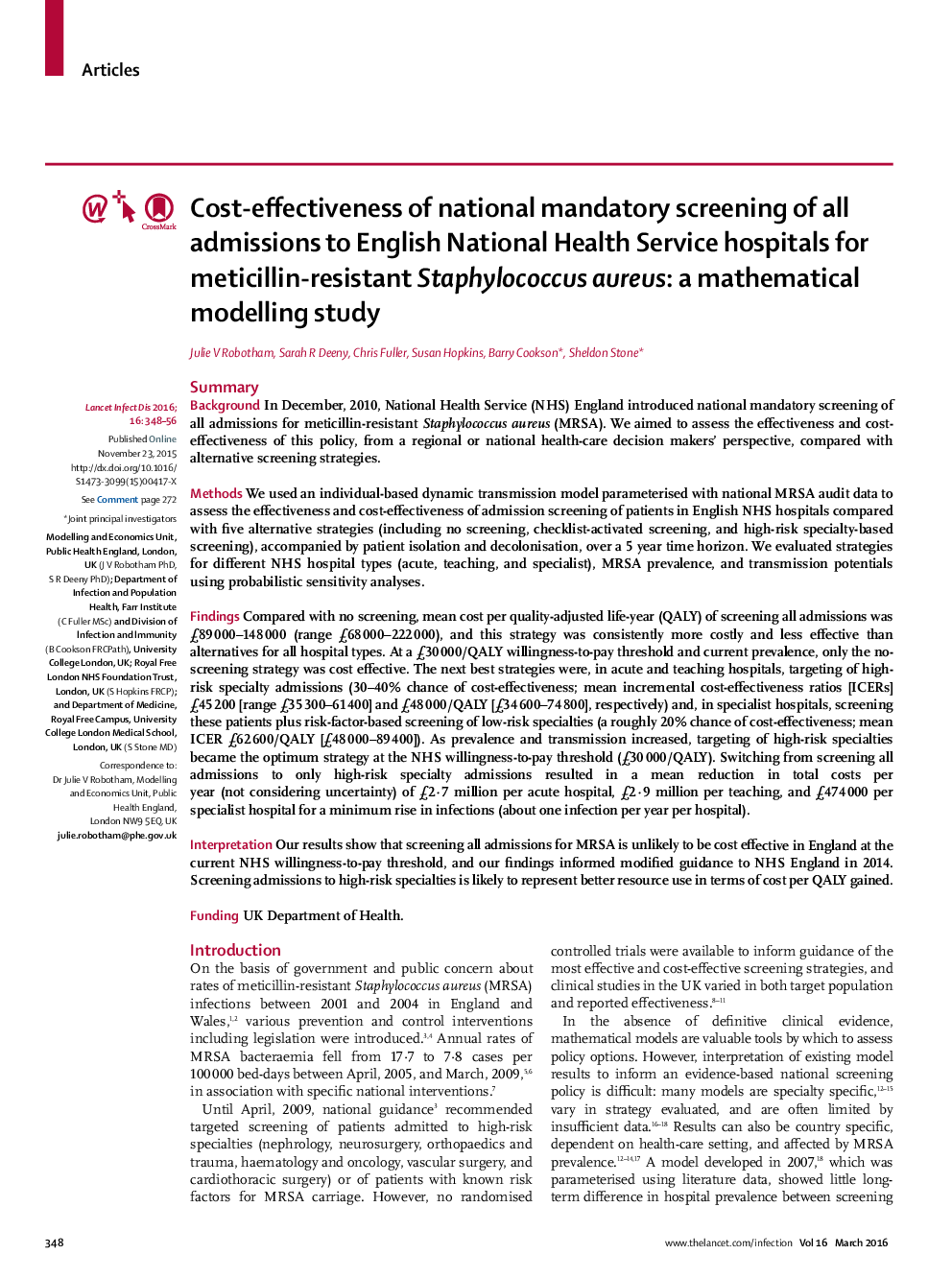| کد مقاله | کد نشریه | سال انتشار | مقاله انگلیسی | نسخه تمام متن |
|---|---|---|---|---|
| 3409896 | 1224042 | 2016 | 9 صفحه PDF | دانلود رایگان |
SummaryBackgroundIn December, 2010, National Health Service (NHS) England introduced national mandatory screening of all admissions for meticillin-resistant Staphylococcus aureus (MRSA). We aimed to assess the effectiveness and cost-effectiveness of this policy, from a regional or national health-care decision makers' perspective, compared with alternative screening strategies.MethodsWe used an individual-based dynamic transmission model parameterised with national MRSA audit data to assess the effectiveness and cost-effectiveness of admission screening of patients in English NHS hospitals compared with five alternative strategies (including no screening, checklist-activated screening, and high-risk specialty-based screening), accompanied by patient isolation and decolonisation, over a 5 year time horizon. We evaluated strategies for different NHS hospital types (acute, teaching, and specialist), MRSA prevalence, and transmission potentials using probabilistic sensitivity analyses.FindingsCompared with no screening, mean cost per quality-adjusted life-year (QALY) of screening all admissions was £89 000–148 000 (range £68 000–222 000), and this strategy was consistently more costly and less effective than alternatives for all hospital types. At a £30 000/QALY willingness-to-pay threshold and current prevalence, only the no-screening strategy was cost effective. The next best strategies were, in acute and teaching hospitals, targeting of high-risk specialty admissions (30–40% chance of cost-effectiveness; mean incremental cost-effectiveness ratios [ICERs] £45 200 [range £35 300–61 400] and £48 000/QALY [£34 600–74 800], respectively) and, in specialist hospitals, screening these patients plus risk-factor-based screening of low-risk specialties (a roughly 20% chance of cost-effectiveness; mean ICER £62 600/QALY [£48 000–89 400]). As prevalence and transmission increased, targeting of high-risk specialties became the optimum strategy at the NHS willingness-to-pay threshold (£30 000/QALY). Switching from screening all admissions to only high-risk specialty admissions resulted in a mean reduction in total costs per year (not considering uncertainty) of £2·7 million per acute hospital, £2·9 million per teaching, and £474 000 per specialist hospital for a minimum rise in infections (about one infection per year per hospital).InterpretationOur results show that screening all admissions for MRSA is unlikely to be cost effective in England at the current NHS willingness-to-pay threshold, and our findings informed modified guidance to NHS England in 2014. Screening admissions to high-risk specialties is likely to represent better resource use in terms of cost per QALY gained.FundingUK Department of Health.
Journal: - Volume 16, Issue 3, March 2016, Pages 348–356
